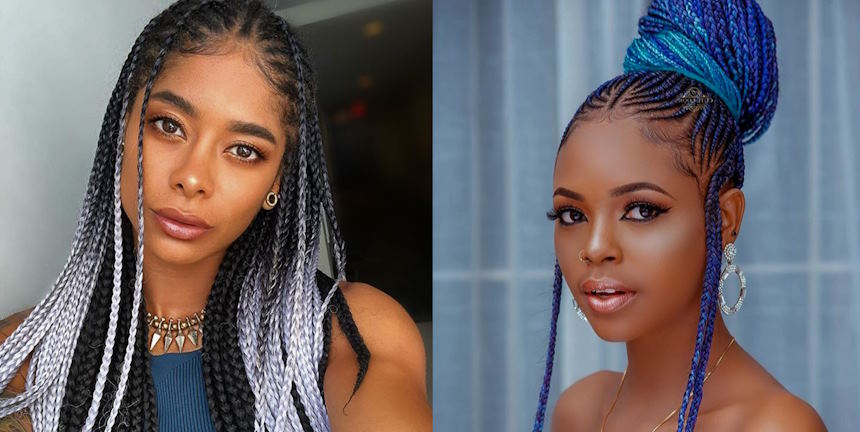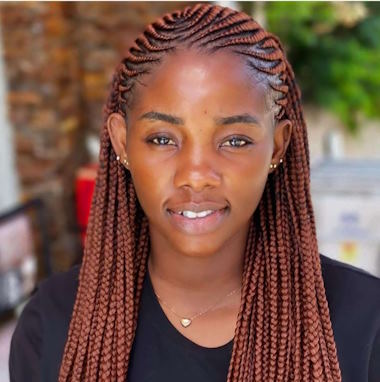Exquisite Fulani Tribal Braids: A Timeless African Beauty

From the vast landscapes of West Africa emerges a captivating hairstyle that has stood the test of time, embodying the essence of African beauty and cultural heritage. Fulani tribal braids, with their intricate patterns and elegant adornments, have long been revered as an emblem of the Fulani people’s rich history and nomadic lifestyle. As a testament to their enduring allure, these braids have gained a renewed popularity in recent years, captivating the hearts of individuals across the globe.
Elements of Fulani Tribal Braids
Fulani tribal braids are renowned for their distinctive features that set them apart as a true work of art. One of the defining characteristics of these braids is their intricate patterns, which showcase the skill and creativity of the braider. The patterns often consist of thin, neat lines that form geometric shapes or elaborate designs. These intricate patterns not only add visual interest but also serve as a means of cultural expression, conveying messages and stories within the Fulani community.
Beyond the patterns, Fulani braids encompass a wide range of styles and variations that showcase the versatility of this hairstyle. One of the most popular styles is the long braids, which cascade down the back in graceful elegance. These long braids can be styled in different ways, such as leaving them loose, tying them into a ponytail, or even braiding them into an updo for a more formal look. Additionally, cornrows are commonly incorporated into Fulani braids, creating a combination of intricate braided patterns close to the scalp and the longer braids hanging freely.

What truly elevates Fulani tribal braids to a new level of allure is the use of unique accessories and embellishments. Cowrie shells, with their natural beauty and cultural significance, are often incorporated into the braids. They are meticulously woven into the hair, adding a touch of elegance and symbolism. Beads of various shapes, sizes, and colors are also skillfully threaded onto the braids, enhancing their visual appeal and creating a delightful interplay of texture and color.
The Braiding Process and Techniques
Creating Fulani tribal braids is a labor of love that involves a meticulous process from start to finish. Understanding the steps involved and the techniques used is essential for achieving the desired results and ensuring the longevity of these stunning braids.
 The braiding process begins with thorough preparation. The hair is washed, conditioned, and carefully detangled to create a smooth foundation. It is important to ensure the hair is completely dry before proceeding to prevent any moisture-related issues once the braids are in place. Next, the hair is sectioned off into smaller parts, allowing for easier handling and braiding.
The braiding process begins with thorough preparation. The hair is washed, conditioned, and carefully detangled to create a smooth foundation. It is important to ensure the hair is completely dry before proceeding to prevent any moisture-related issues once the braids are in place. Next, the hair is sectioned off into smaller parts, allowing for easier handling and braiding.
When it comes to the techniques used in Fulani braiding, several methods come into play. Cornrowing is a common technique where the hair is tightly braided close to the scalp in neat, uniform rows. This forms the base upon which the longer braids will be attached. Feeding, also known as extension braiding, involves adding additional hair to create longer and fuller braids. This technique allows for more versatility in styling and achieving various lengths. Twisting is another technique that can be incorporated into Fulani braids, adding texture and dimension to the overall look.
Once the braids are complete, proper maintenance and care are crucial for preserving their beauty and ensuring their longevity. It is essential to keep the scalp clean and moisturized, using natural oils or specialized products to prevent dryness and itchiness. Sleeping with a silk or satin scarf or using a satin pillowcase can help minimize friction and maintain the braids’ shape. Regular touch-ups and re-braiding of loose or frizzy sections are recommended to keep the braids looking fresh and well-maintained.
